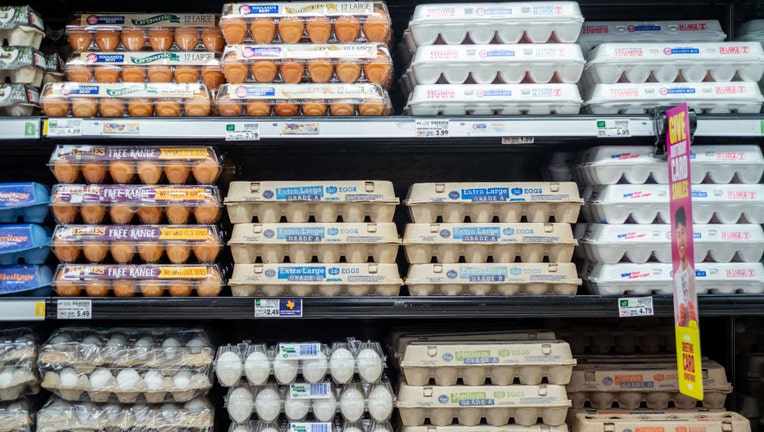Egg prices have spiked again, especially in California: here's why

Eggs, which appear in various sides at cookouts, run about $2.67 for a dozen, according to the Wells Fargo report. (Brandon Bell/Getty Images)
OAKLAND, Calif. - Egg prices are soaring again, up more than 28% from a year ago. And in California, prices are even higher.
The nationwide average for a dozen Grade A large eggs was $3.20 in August, according to figures from the U.S. Bureau of Labor Statistics.
Three years ago, it was about $1.71.
In California, personal finance company NerdWallet put the average for a dozen large white cage-free eggs at $5.11.
Of course, there is inflation, but consumer experts largely blame the high prices on the fast-spreading and deadly H5N1 bird flu which has disrupted the egg supply in the U.S. for the past two years.
"It seems like they can’t get over this bird flu outbreak issue," animal protein economist Brian Earnest told NerdWallet.
In California, experts also pointed to another factor for its notably higher egg prices.
"In 2018, California voters passed a ballot measure setting high standards for farm animal welfare. That included requiring that only cage-free eggs be sold in the state," NerdWallet analysts said.
They also said that back in December and January, California was hit with significant bird flu outbreaks, and egg producers have still been reeling from those flock losses.
And with many cage-free egg producers in California, there's been a ripple effect.
"USDA data show the national inventory of cage-free eggs took a big hit when California egg producers reported cases of bird flu," NerdWallet said.
As the law of supply and demand goes, when demand exceeds supply, prices rise. And experts said that demand and price spikes also tend to coincide with seasonal shopping habits.
SEE ALSO: Pumpkin spice products at Starbucks, Walmart, others cost more, study finds
In the fall and winter, seasonal baking leads to increased egg use.
Also, with students returning to schools, cafeterias go heavy on egg-related dishes, further contributing to a surge in demand, according to Earnest.
Experts predict the situation is expected to remain volatile, until egg producers rebuild their flocks, and they're able to increase production.

